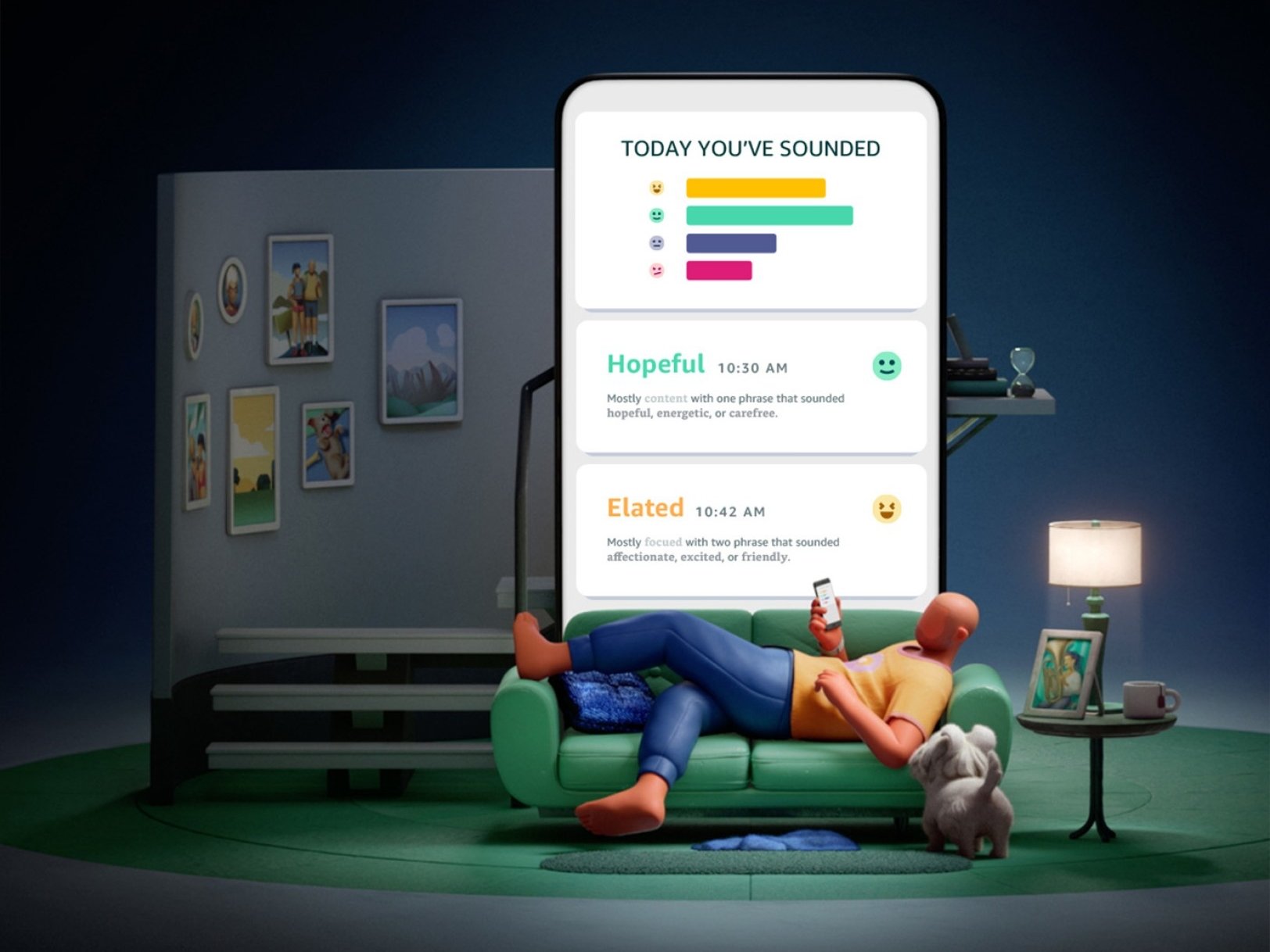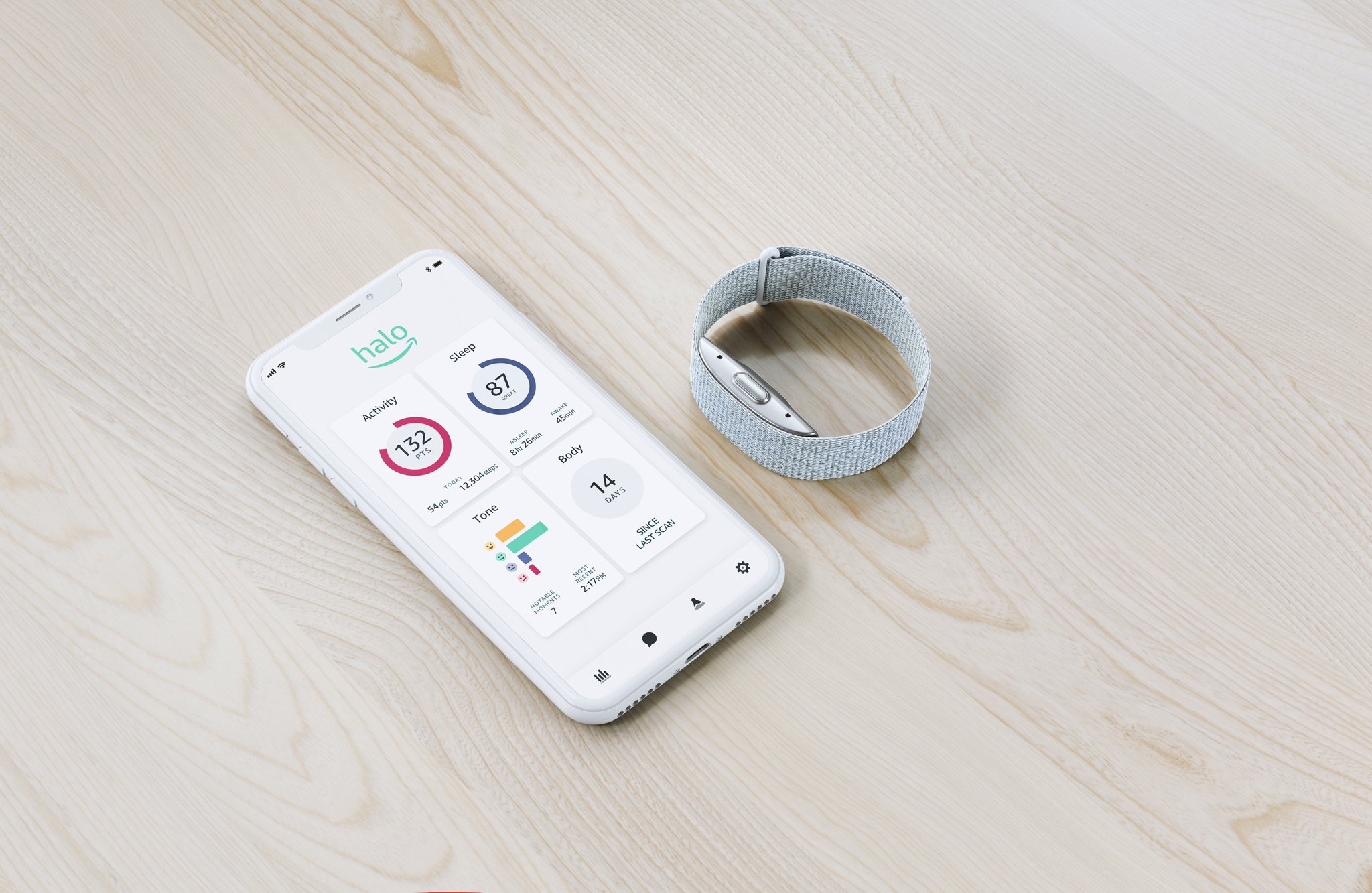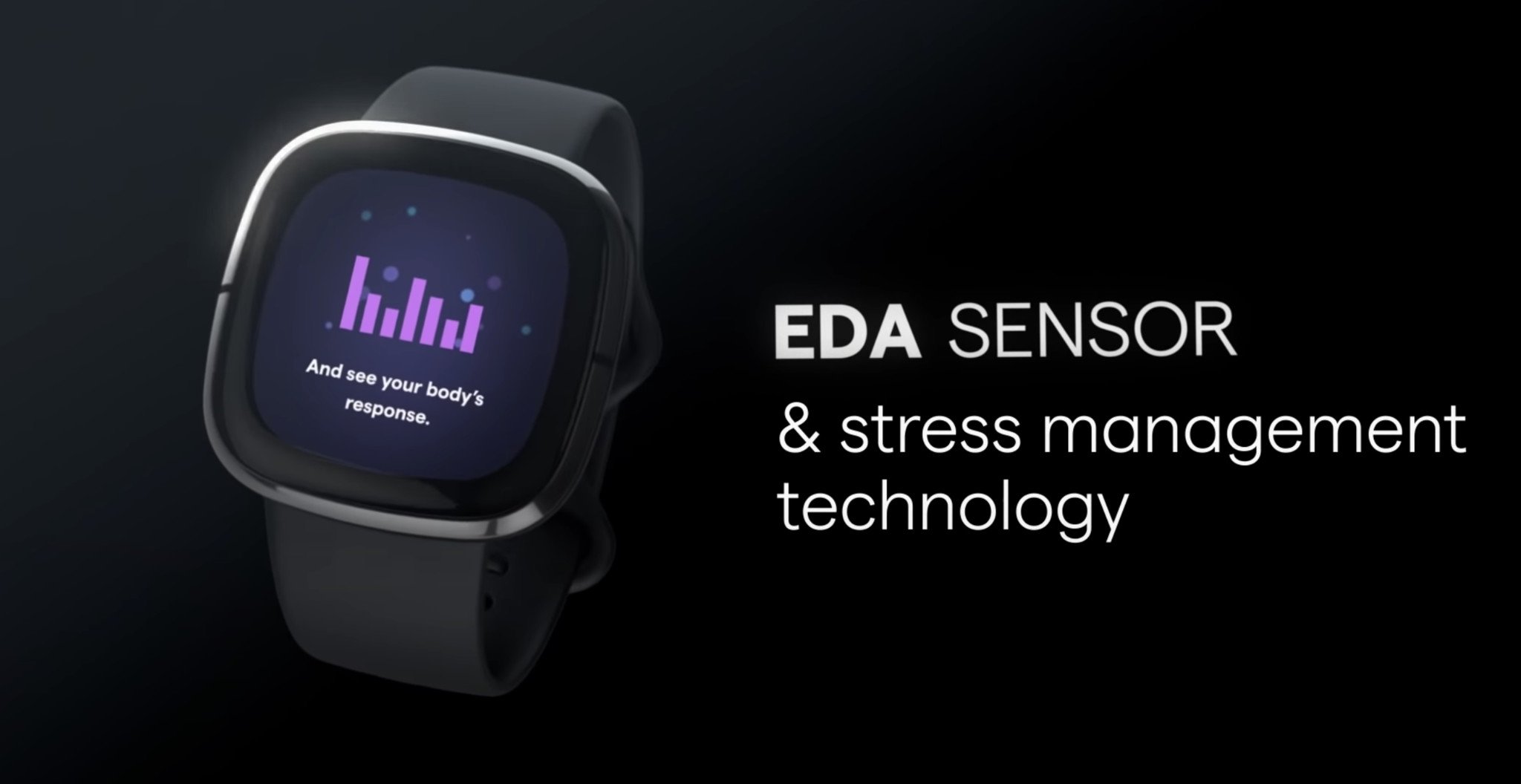A new crop of "wellness" wearables from Fitbit and Amazon just might be more helpful than creepy.
As someone who writes about consumer technology for a living and follows new product rumors and announcements the way others might obsess over fantasy football stats, I've been very excited to see some of the latest wearable tech coming out from companies like Samsung, Fitbit, and yes, even Amazon.
These new batch of wearables have all the traditional sensors and equipment we've come to expect from fitness trackers, such as heart rate monitors, accelerometers, and even SpO2 sensors. However, they've also begun adding features that seem at once to be both amazing and even a bit scary. The Fitbit Sense has an array of new sensors that can measure things like the electrical impulses in your skin, as well as body temperature variations from your wrist. The goal of these new sensors is to help determine your relative level of stress and offer suggestions on how to manage your physical, mental, and emotional wellbeing.
And the latest wearable by Amazon, the Halo, can do things like analyzing full-body scans to help you understand and plan your fitness journey. That particular feature is one that deserves its own column, but what I'm most interested right now with the Halo is a new feature called Tone. Tone uses a pair of always-on microphones on your wrist to listen to and analyze your tone of voice throughout the day, and give you actionable insights based on how you might sound to those you interact with.
Now, I'm not here to have the creepy Big Brother debate right now, and I actually think that Amazon has taken some good steps toward protecting customer privacy with the Halo device and Tone feature. There are plenty of hot takes all around the internet this week on how creepy all of this is — so many that I couldn't possibly link to them all (but here are some good ones from The Verge, OneZero, and Axios).
A feature that may seem creepy or invasive to you or me might prove beneficial or therapeutic to another.
Those hot takes are undoubtedly valid, but I wanted to offer a different perspective on the Halo and Tone. What if this feature that may appear invasive and creepy in everyday use for most people might actually have therapeutic benefits to those with severe communication issues, like, for instance, individuals on the autism spectrum? Perhaps when used in conjunction with a certified ABA therapist under more supervised conditions? I'm not a medical professional, and this is purely speculative, but hear me out.
What is ABA therapy?
For those of you who man not be familiar with the term, ABA or Applied Behavior Analysis, is a series of tools that therapists and trained medical professionals use with patients who have behavioral and communicative issues, like those on the autism spectrum often do. It mixes observation, situational exercises, and positive reinforcement to help patients develop better behavioral habits and a better understanding of how others perceive their actions and behaviors, and what consequences these behaviors may have.
There isn't necessarily one true way to conduct ABA therapy; the genius of it is that it is highly customizable to the individual. Most of it is done in one-on-one or small group settings and is often followed through at home as well with exercises and additional reinforcement. ABA practitioners have been using technology in various forms to assist in their therapies, but most of that thus far has been restricted to active technologies in the form of educational apps, or by recording video of behavior and analyzing it later with the patient to see what can be learned and improved upon. There have not been much of, if any, passive use cases for technology to assist with ABA or related therapies, at least not that I could easily find.
I have a son who is on the high-functioning end of the autism spectrum, and for several years we participated in ABA therapy to help him learn strategies to better communicate with others and cope with emotional outbursts. Thankfully, this therapy has been a success for us — to the point where we no longer require additional assistance. But I know from first-hand experience that having a device like the Halo and a feature like Tone could have been very helpful in the process of helping him learn how others may have perceived his tone. You know how kids are; parents can say something until we're blue in the face, but that doesn't mean that our kids will listen to us. But if it's a dispassionate third-party (even a technological one reflecting the child's own actual behavior), they may be more likely to accept and internalize those suggestions.
I spoke with Kristen Rakun, (LBA, BCBA), who is the Director of Spark Learning, an Austin, Texas-based ABA therapy center. Ms. Rakun told me that while it's still very early days, she is "optimistic that something like this could be a beneficial tool during ABA sessions," but was careful to note that it would only be a part of the puzzle.
The Halo "doesn't really capture both sides of the social interaction," Ms. Rakun told me. Wearers would "still have to dissect that information carefully to understand the other person's perspective," which is something Ms. Rakun believes guided ABA therapy can help them do. Ms. Rakun also cautioned that the information communicated by the Tone feature could even lead to increased anxiety among patients. "This thing could tell you you're not doing well socially and produce even more anxiety. It's really important that it be used in a therapeutic way first, and that individuals are taught how to use it."
When asked, a spokesperson from Amazon told me that they weren't willing to speculate about future use cases for the Halo device and the Tone feature:
Right now, Tone helps customers understand how they sound to others. It does not diagnose or otherwise tell customers how they should sound; in fact, the most interesting insights also happen when how you sound and how you feel don't match up.
Virtual health assistants
Aside from more intensive therapies like ABA, I'm coming around to the idea that devices like the Amazon Halo and Fitbit Sense have a place in helping people better understand their bodies, their minds, and their emotions. Writing this article made me reflect on my own emotional and mental issues, and I think that in addition to the benefits I'd glean from these tools today, a younger me could have genuinely benefitted from something like the Fitbit Sense or Amazon Halo.
There are real upsides to some of this new holistic health technology that we may be overlooking in our cynical tech bubble.
You see, I have suffered from social anxiety and panic attacks since I was a teenager, and I didn't even know what was happening to me until I finally got fed up with it and sought professional attention while in college. I was fortunate to connect with a therapist, find a medication regimen that worked for me and have the support of loving family and friends.
However, if I had something like the Halo or Sense when I was in college that could have alerted me to a coming panic or anxiety attack days, hours, or even minutes in advance, then I think I could have mitigated or managed those issues better, and perhaps been calmer and more in control than I was for a long time. I am positive that it would have had a beneficial effect on my mental and emotional state, and probably would have made me more confident to face a lot of struggles that life threw at me. You could almost say that for many people like myself, a device like the Amazon Halo or Fitbit Sense can be more of a virtual health assistant than a fitness tracker or smartwatch.
I completely understand the critiques that this new consumer tech is receiving, but I wanted to point out that some of it can be truly transformative and helpful to a lot of people; a lot of people that we don't always think about in our tech bubble.
Here's wishing you good mental and emotional health. Take care of yourselves!
—Jeramy
from Android Central - Android Forums, News, Reviews, Help and Android Wallpapers https://ift.tt/3i5HjaX
via IFTTT



No comments:
Post a Comment